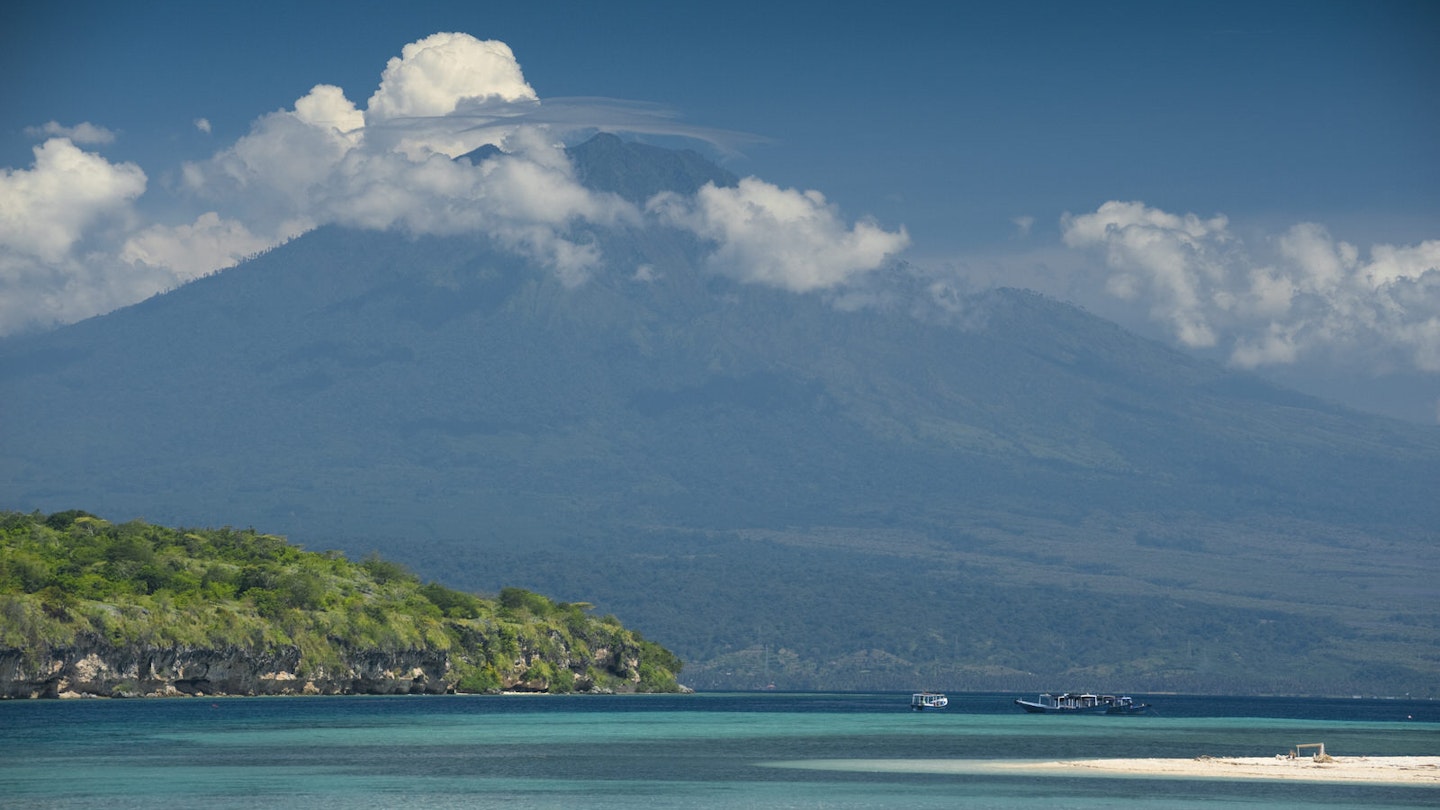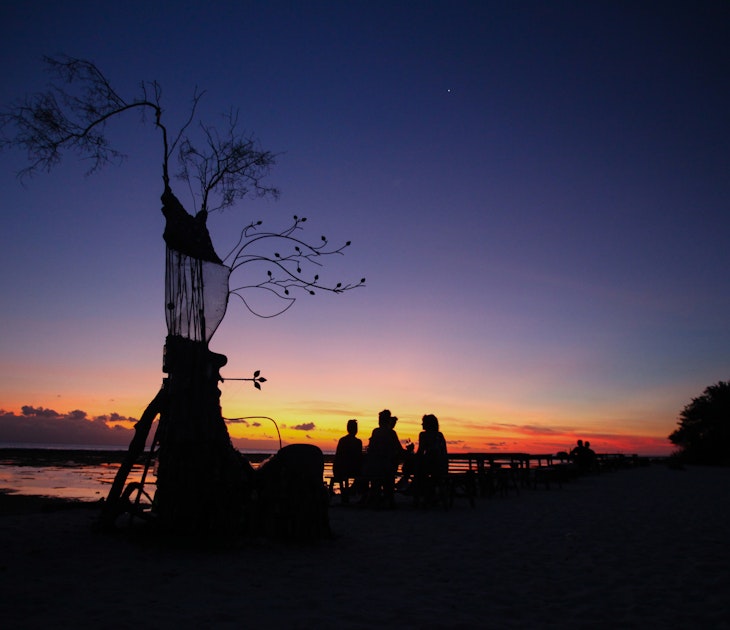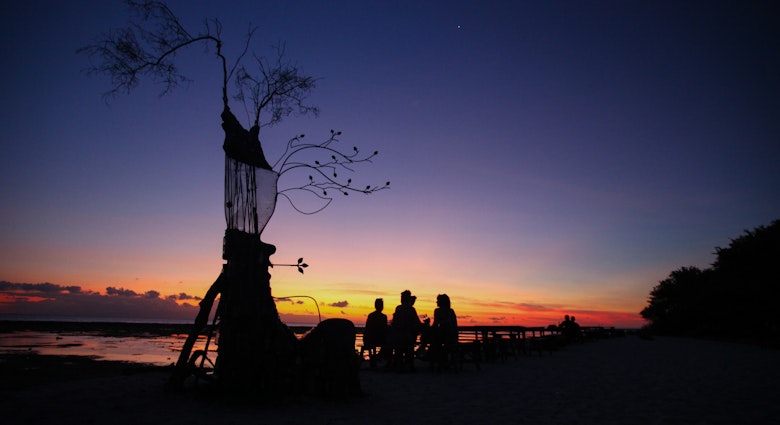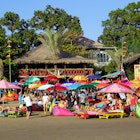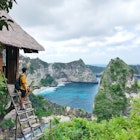Sinuous ribbons of green unfold on all sides as you wind your way through the rugged central mountains of Bali. It's a timeless tableaux of tumbling rice terraces, the kind of vista that causes hands to go searching for the camera-phone, even before the brain says 'that would make a great picture'.
But perhaps the most remarkable thing about this scene is what is not in it: mobs of other tourists. That's because this road, which runs to the north coast of Bali from the small town of Antosari in the west, is one of the island's best travel secrets. That alone would be reason enough to enjoy the ride, but here the journey – spectacular as it is – is just a means to the actual reward: the hideaway beach resort of Pemuteran.
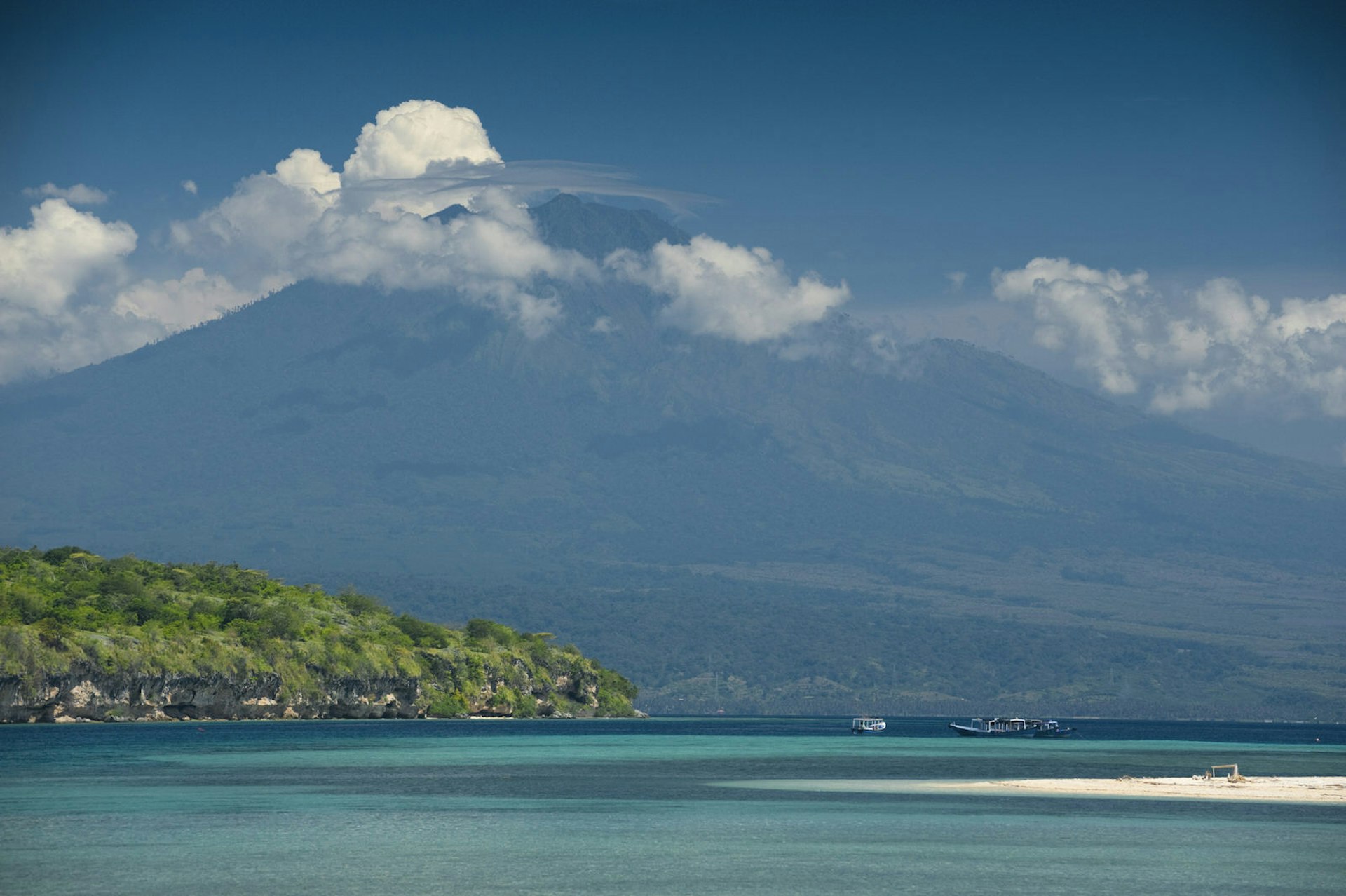
Tucked away in the far northwest corner of Bali, this peaceful getaway has avoided the crowds and over-subscribed appeal of places such as Candidasa, Lovina and Ulu Watu through clever planning and a community-wide commitment to avoiding the ravages of over-development.
Pemuteran on land
The waves breaking on the coast of Pemuteran barely qualify as surf, since the shore here is protected by reefs, like the rest of Bali's northern shore. But that gentle lapping of the water against the volcanic sand only adds to the languorous mood of Pemuteran's beaches. This is a place to kick away your flip-flops and cares and laze away the hours on a lounger beneath the rays.
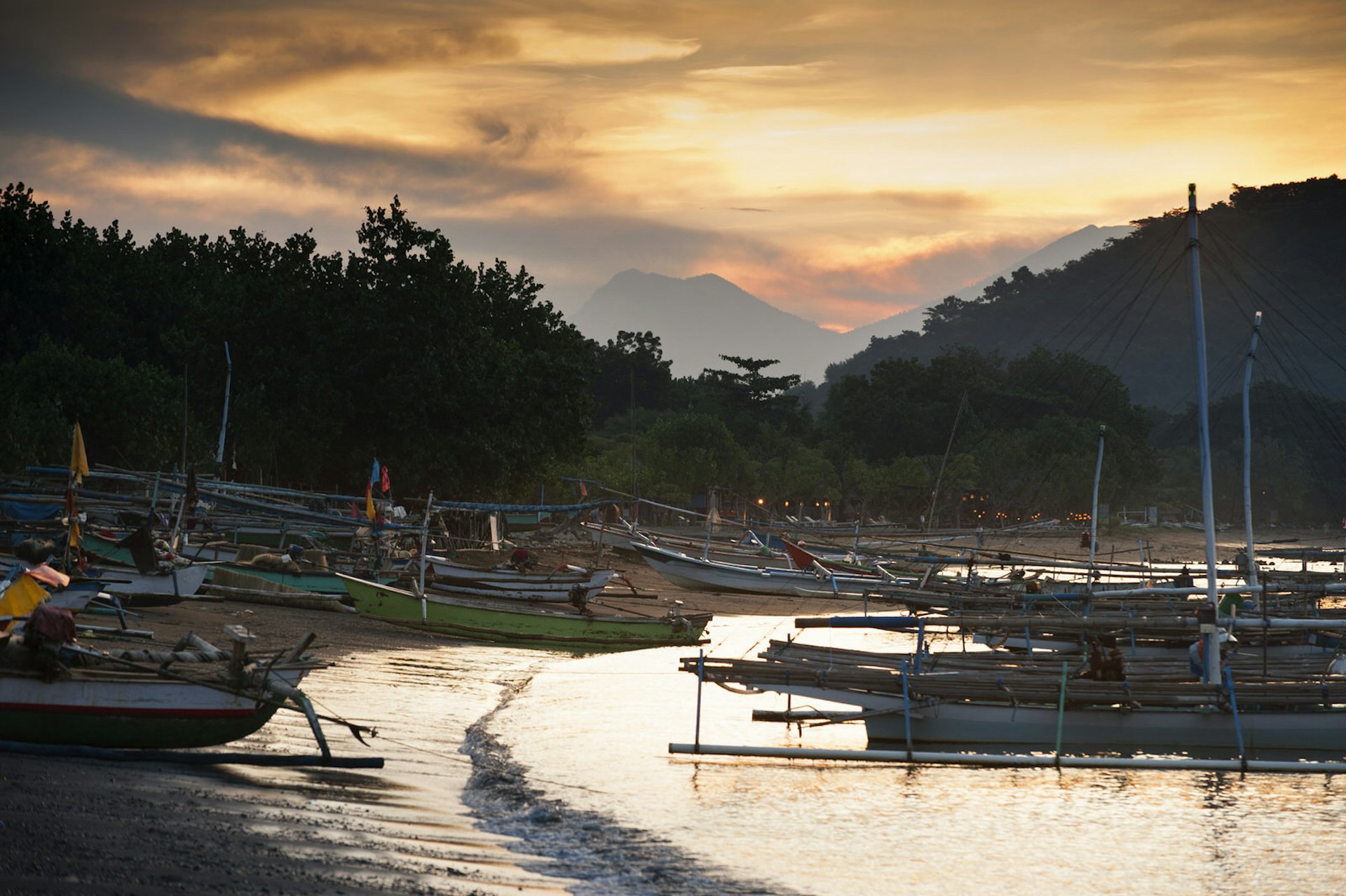
As the afternoon advances and shadows lengthen, work up an appetite for supper on a rewarding stroll along the sand. Kids from the village finish their day with games of soccer on the foreshore while fishermen toil on the fishing boats lined up above the tideline. You may see new boats being built, and you'll definitely receive plenty of smiles as everybody is happy to pause and offer up a traditional selamat malam (good evening).
As you wander, pause to consider the remarkable local environmental project, Bio Rocks, which exemplifies the local approach to tourism and the environment. Those cables you see emerging periodically from the sand and running offshore carry very low charges of electricity which are used with metal grids to grow new coral. Once damaged by dynamite fishing and bleached by climate change, the reef at Pemuteran is getting healthier every year, with new coral growing at over five times the normal rate thanks to this innovative community project.
Underwater Pemuteran
Pemuteran's dogbone-shaped double bay of beaches would be a sufficient draw to justify a visit all by itself, but the absolute ‘book now’ imperative is just west at Pulau Menjangan. This is the largest island in Taman Nasional Bali Barat (West Bali National Park), Bali's only national park, and just offshore is some of Bali's – and Indonesia's – best snorkelling and diving.

At over a dozen sites scattered amidst the turquoise waters around Pulau Menjangan, divers and snorkelers will find corals and sponges of all shapes and sizes and fish of every imaginable colour and shade, darting into submerged caves and diving over spectacular drop-offs. It's the kind of underwater fantasyland that people imagine ahead of coming to Bali, but only discover when they drop into the waters off Pulau Menjangan.
Visitors hoping for a no-fuss entry into this underwater world can enjoy the easiest snorkelling imaginable. Boats drop swimmers right over the coral in shallow waters near the jetty at Pulau Menjangan, where gentle currents will waft you along past this stunning natural spectacle. Without much effort, you can paddle over to where the coral drops off, forming a soaring 30m wall. This is where many dives start and snorkelers may find themselves suddenly surrounded by silvery, undulating orbs, as air bubbles rise up from the divers below.

Besides great numbers of clownfish and parrotfish, you may be lucky enough to spot some larger pelagics. Whale sharks, manta rays and even whales regularly visit the area. Divers have the best chance of seeing these graceful giants, and, can also explore the encrusted remains of the Anker Wreck, a 19th-century wooden cargo ship that spilled its load of bottles, ceramics and copper across the seabed.
Although the reefs by the Pulau Menjangan jetty are the most popular snorkelling spot, ask your boat to take you around to the less visited north side of the island, where there will be fewer people in the water and even more fish. Pemuteran has numerous dive shops and any hotel or resort can arrange snorkelling and diving trips.
Sleeping and eating Pemuteran
When plans were first made to bring tourism to Pemuteran's traditional fishing economy, a forward-thinking group of ex-pats, investors and community leaders formed a concerted plan to prevent this then-remote gem from becoming another Kuta or Legian.
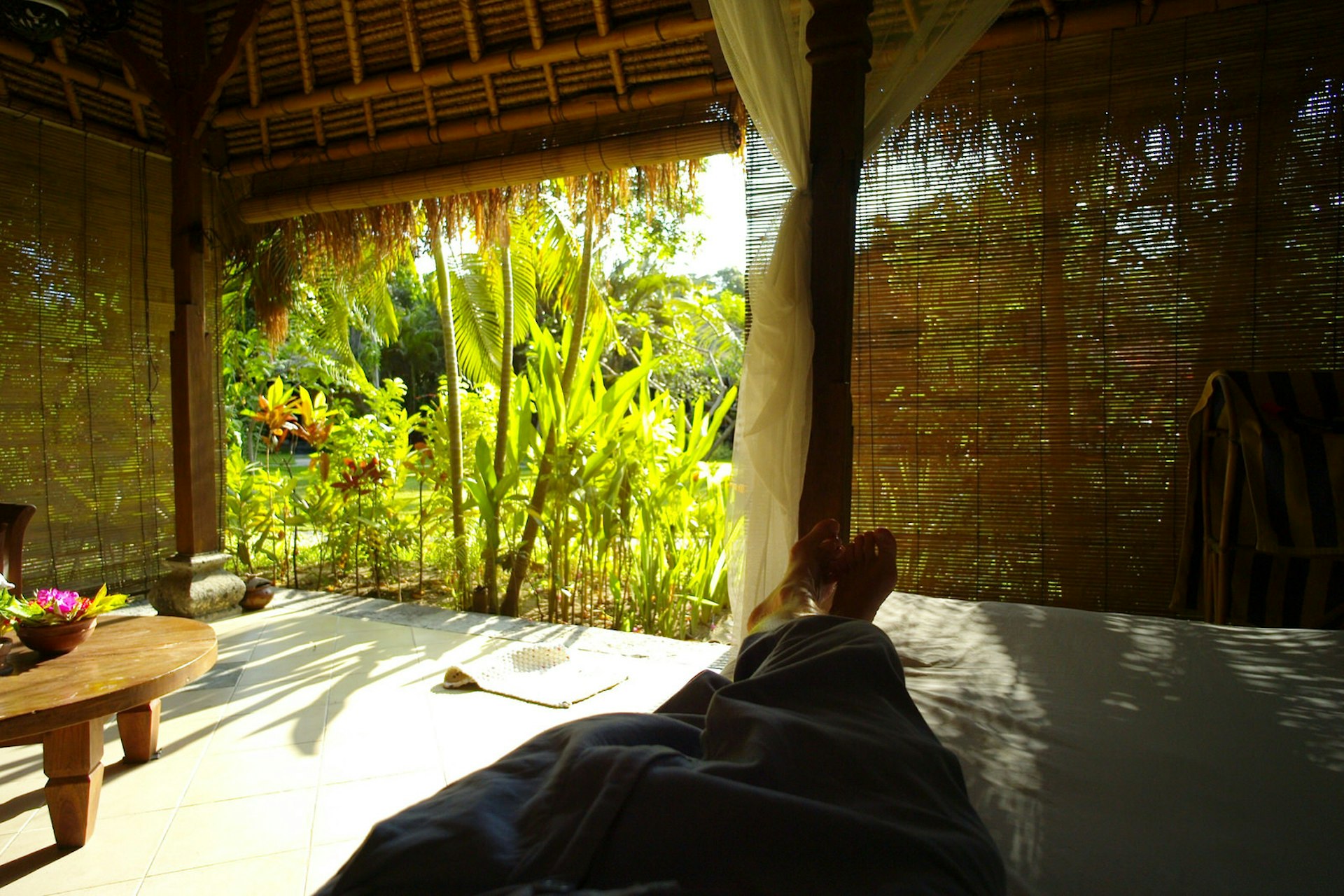
Beachfront land was divided up into large plots that are now home to some of Bali's most gracious resorts. Traditional-style bungalows are scattered about lushly planted gardens. Nothing is crowded and nothing is over one story in height. Further way from the beach, small lanes link family-run guesthouses and a scattering of cafes and restaurants tucked here and there. What you won't find is anything remotely flash or brash; here, the local rhythms set the pace.
Among the many excellent places to stay, Taman Sari, is typical Pemuteran: low-key and relaxed, with a few dozen bungalows spread about a wide site along the beach. More boutique in style, Matahari Beach Resort doubles down on gracious Bali style and is set along a quiet stretch of beach. Inland, Jubawa Homestay, is one of many comfy budget choices away from the sand, with rooms set around a lovely pool. All the resorts have good restaurants, but you can't beat the charm — and the Balinese food — at family-run Bali Re.
Reaching Pemuteran
There are several ways to reach Pemuteran from south Bali, but none come close to the sublime beauty of the road from Antosari, which begins just west of Tabanan. Compare this scenic rural back-route to the coastal highway that loops around to the west and north, where drivers sit trapped amidst clusters of exhaust-spilling, overloaded trucks going to and from the port town of Gilimanuk and the Java ferries.

The other scenic route to Pemuteran is via the mountain lake of Danau Bratan with its iconic temple, Pura Ulun Danu Bratan, looming over the water in 11 graceful tiers. The main route to Pemuteran continues to the regional capital of Singaraja in the north, then cuts west through Lovina. However, a less crowded alternative is to take the quiet country road from Danau Bratan through the charming hill town of Munduk, which is known for its temperate climate, sweeping views and hiking paths to forest waterfalls.
For spectacular views in both directions, come in via the rice terraces and unspoiled vistas of the Antosari Road, and head out via Munduk and Danau Bratan in the other direction. You’ll be amazed to see so much natural beauty and so few people enjoying it.
